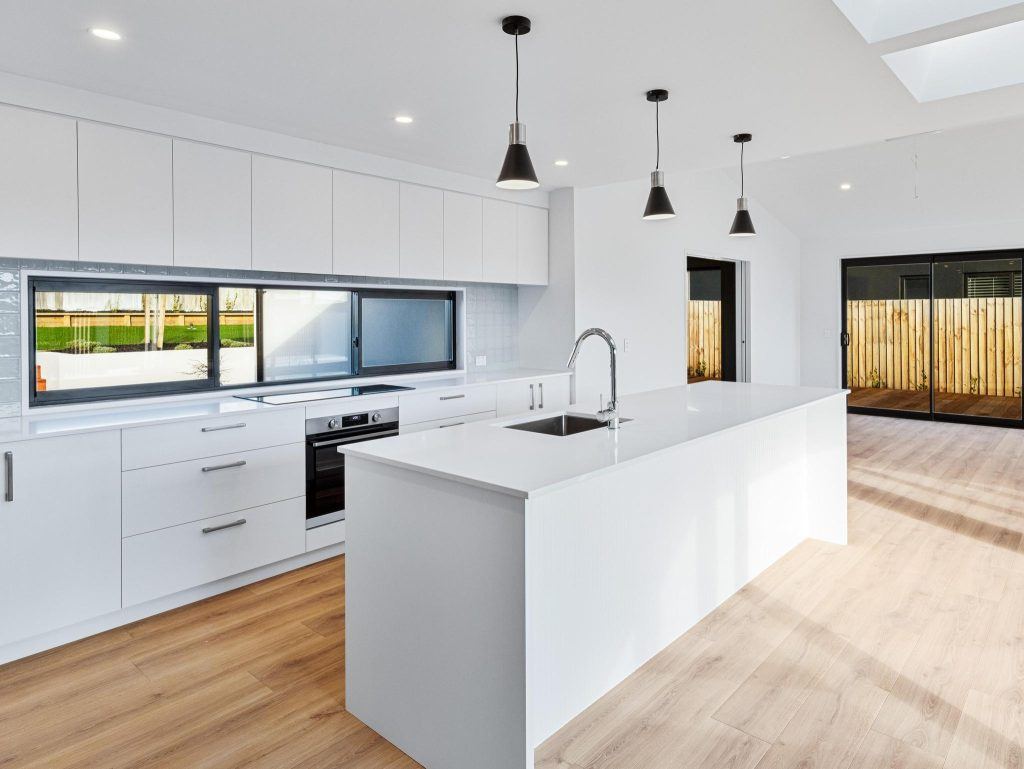Renovating your kitchen on a budget doesn’t mean you have to sacrifice style or functionality. With thoughtful planning, smart choices, and a little creativity, you can transform your kitchen into the space you’ve always dreamed of—all while keeping costs in check. Here’s an in-depth guide to help you through the process.
1. Assess Your Kitchen Needs
Before diving into any renovation project, it’s important to take a good, honest look at your kitchen. What really needs to be changed? Are your cabinets outdated? Is the layout inefficient? Are you lacking storage space? By figuring out what’s not working, you can prioritize which areas need the most attention.
Tip: Make a list of your must-haves (like fixing that awkward corner cabinet) and nice-to-haves (like upgrading your countertops). This will help you stay focused as you move forward.
2. Set a Realistic Budget (and Stick to It!)
One of the most crucial steps in a budget-friendly renovation is setting a clear budget from the start. Think about how much you can realistically spend and then plan accordingly. Always leave room for the unexpected—whether it’s a surprise plumbing issue or an extra coat of paint that’s needed, having a contingency fund (around 10-20% of your total budget) will help avoid stress down the road.
Tip: Use a spreadsheet or an app to track every expense, no matter how small. It’s easy to lose track of spending, and a budget breakdown will keep things organized.
3. Scope of Renovation: What Are You Changing?
Now that you’ve got a budget, decide what your renovation will include. Are you planning cosmetic changes like a fresh coat of paint, or are you thinking bigger, like knocking down walls or rearranging the layout?
Prioritize: Focus on what will have the most impact, like improving the flow of the kitchen or replacing old appliances. If your cabinets are in good shape but look outdated, maybe painting them would give you the upgrade you’re looking for without spending a fortune.
4. Research and Plan Ahead
Once you know what changes you want to make, it’s time to do some research. This will give you a better idea of how much materials and labor will cost. Reach out to contractors for quotes or visit your local home improvement store to get price ranges on everything from cabinets to flooring.
Tip: Keep an eye out for sales or discounts on appliances and materials, and if possible, plan your renovation during off-peak times when contractors might charge less.
5. Break Down the Costs
Every renovation comes with a lot of moving parts, so breaking down your budget into categories can be really helpful. Think about how much you want to spend on key components like:
- Cabinets
- Countertops
- Appliances
- Lighting
- Fixtures
- Flooring
Don’t forget the “hidden” costs, such as labor, permits, and disposal of old materials. The goal is to allocate funds where they’ll make the biggest difference and cut costs where possible.
6. Budget Flexibility
It’s easy to get carried away with upgrades and fancy finishes, but try to stick to a budget that works for you. Be realistic about potential trade-offs: maybe you spend less on your countertops so you can invest in a quality range or fridge.
Tip: Leave wiggle room in your budget, and remember that sometimes a simple change, like new hardware, can make a big impact.
7. DIY vs. Hiring Pros: Know Your Limits
If you’re handy, DIY can save you a lot of money. But be honest with yourself about your skills and the time you can commit. Some things, like painting or installing shelves, can be great DIY projects. Others, like electrical work or plumbing, may require a professional.
Pros of Hiring Professionals:
- Experience & Expertise: They know how to get the job done efficiently and correctly.
- Time-Saving: Renovations can be time-consuming, and professionals will complete the job much faster.
- Quality Assurance: You get the peace of mind knowing everything is up to code and done to a high standard.
Tip: Get quotes from multiple contractors before deciding. And don’t be afraid to negotiate!
8. Cost-Effective Materials: Look for Affordable Alternatives
There’s no need to break the bank with expensive materials when there are plenty of budget-friendly options that still look fantastic.
- Paint: Give your cabinets, walls, or countertops a fresh, modern look with paint. High-quality paint can completely transform your kitchen at a fraction of the cost of a full remodel.
- Laminate Countertops: These are much cheaper than stone options like granite or quartz, and with so many colors and patterns available, you can still achieve the look you want.
- RTA (Ready-to-Assemble) Cabinets: Ready-to-assemble cabinets are a great way to save on installation costs and give you that custom look without the custom price.
- Vinyl Flooring: Durable and available in many styles, vinyl flooring is an affordable option that mimics the look of wood or tile.
Tip: Open shelving instead of upper cabinets is a trendy and cost-effective alternative. It also makes your kitchen feel larger and more open.
9. Make Space Work for You
Optimizing your kitchen’s layout doesn’t have to involve knocking down walls. Small, clever adjustments can make a huge difference in how your space feels and functions.
- Smart Storage Solutions: Use pull-out drawers, lazy Susans, or even vertical storage to maximize every inch of your kitchen.
- Multi-Functional Furniture: Choose pieces like a kitchen island that can serve as both a workspace and a dining area. Or, try a foldable dining table for when you need extra room.
- Optimized Layout: The classic kitchen work triangle (sink, stove, fridge) helps streamline your cooking process. Keep items you use daily within easy reach to save time and effort.
10. Lighting Can Transform Your Kitchen
One of the simplest, most cost-effective upgrades you can make is to improve your kitchen lighting. Proper lighting makes a world of difference in how your kitchen looks and feels.
- Under-Cabinet Lighting: Adds ambiance and also makes it easier to prep food.
- Pendant Lights: These can be an affordable yet stylish upgrade that instantly modernizes your space.
11. Space-Saving and Multi-Functional Appliances
If you have a smaller kitchen, consider appliances that are designed to save space without sacrificing functionality. Compact dishwashers, combination microwave/convection ovens, or refrigerator drawers can help make the most of your space.
Tip: Look for energy-efficient models that not only save space but also lower your energy bills in the long run.
12. Add Reflective Surfaces for a Bigger Feel
Want your kitchen to feel larger than it is? Reflective surfaces are your best friend! Adding a mirrored backsplash or choosing glossy finishes for cabinets and countertops will bounce light around the room, making it feel bigger and brighter.
Conclusion: You Can Achieve Your Dream Kitchen Without Breaking the Bank
Renovating your kitchen on a budget is all about making smart, creative choices. Focus on what really matters to you, and don’t be afraid to mix budget-friendly materials with splurge-worthy items to get the best of both worlds. By prioritizing, planning ahead, and staying flexible, you can create a kitchen you love—without the stress of overspending.


